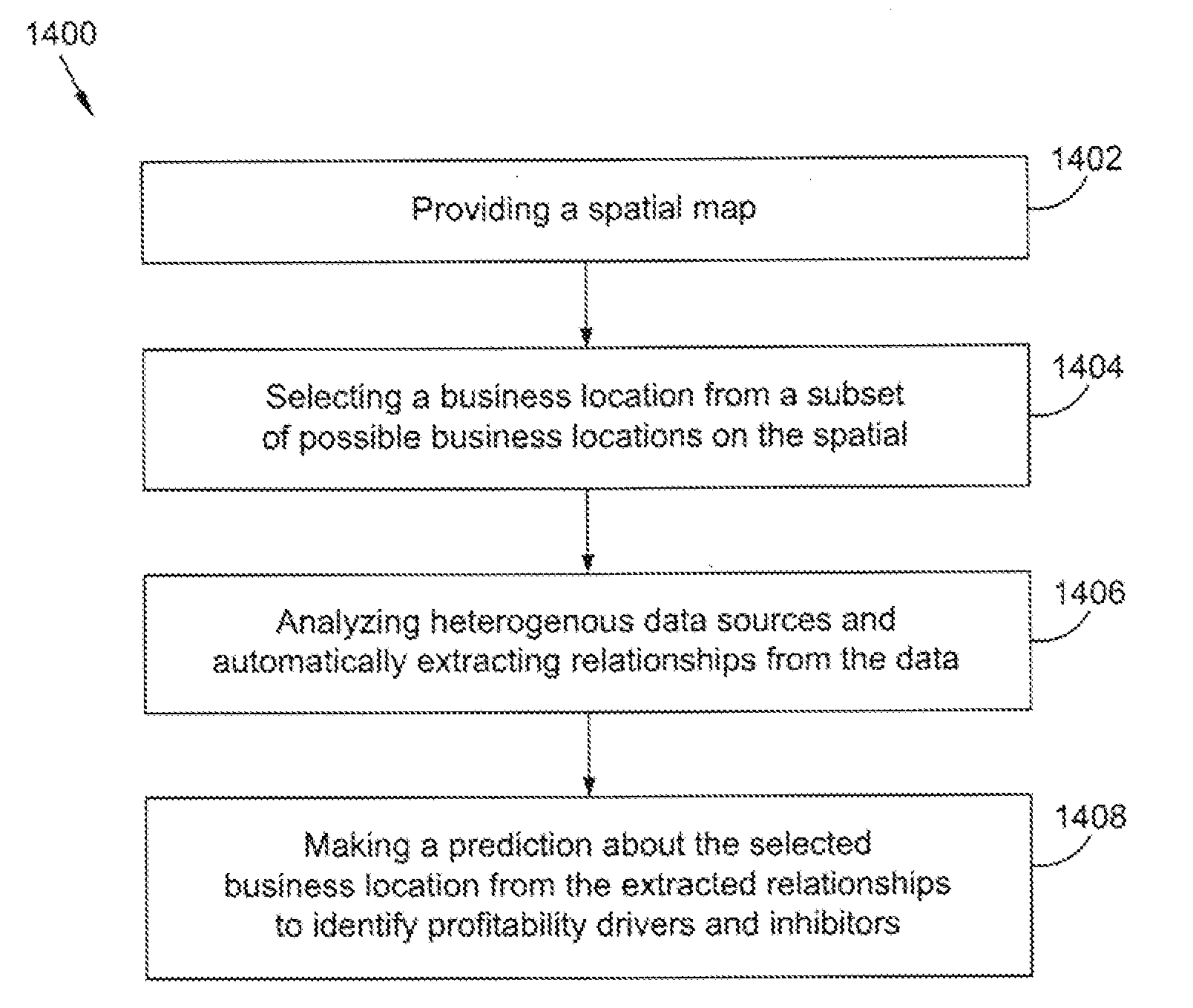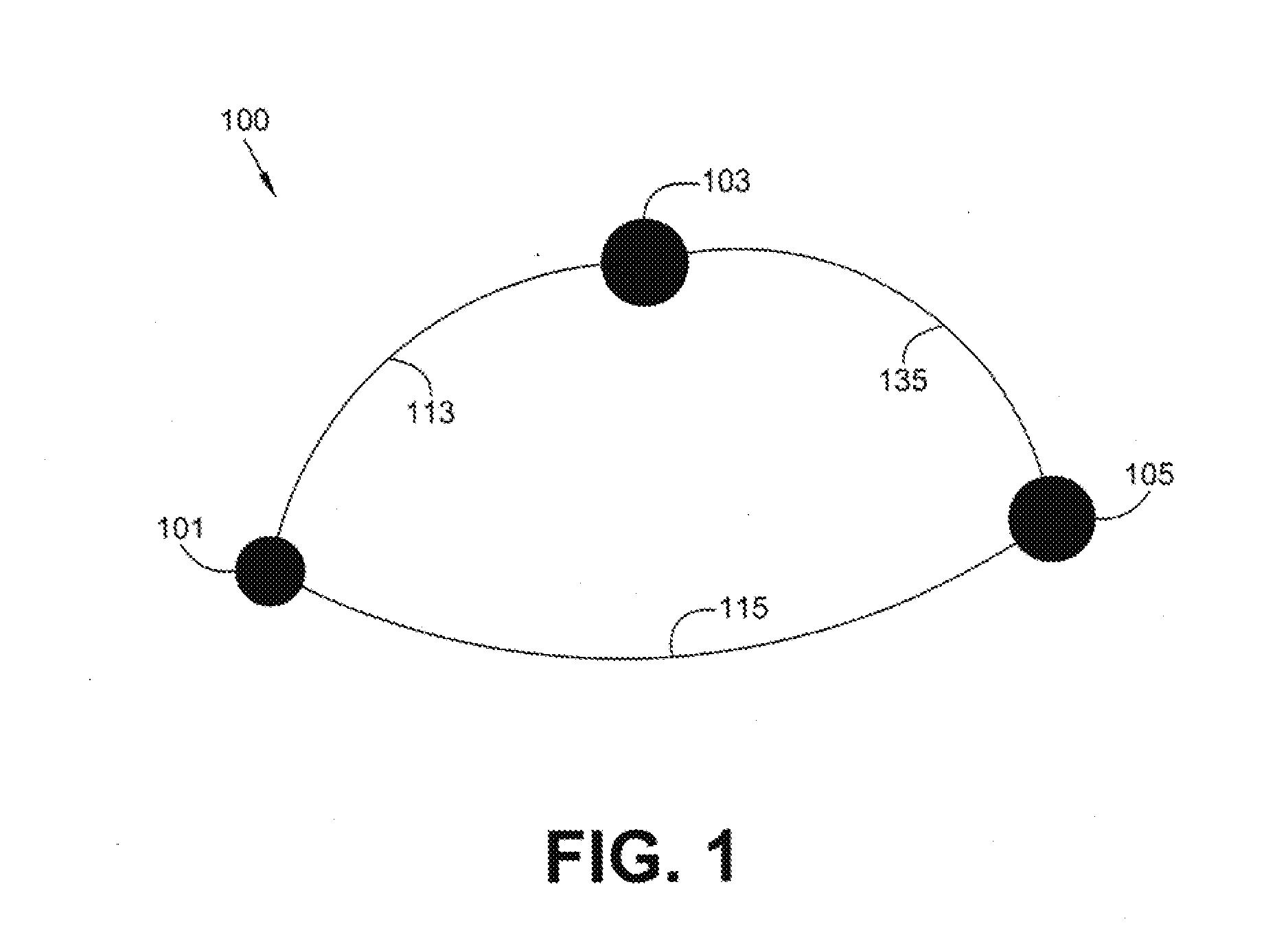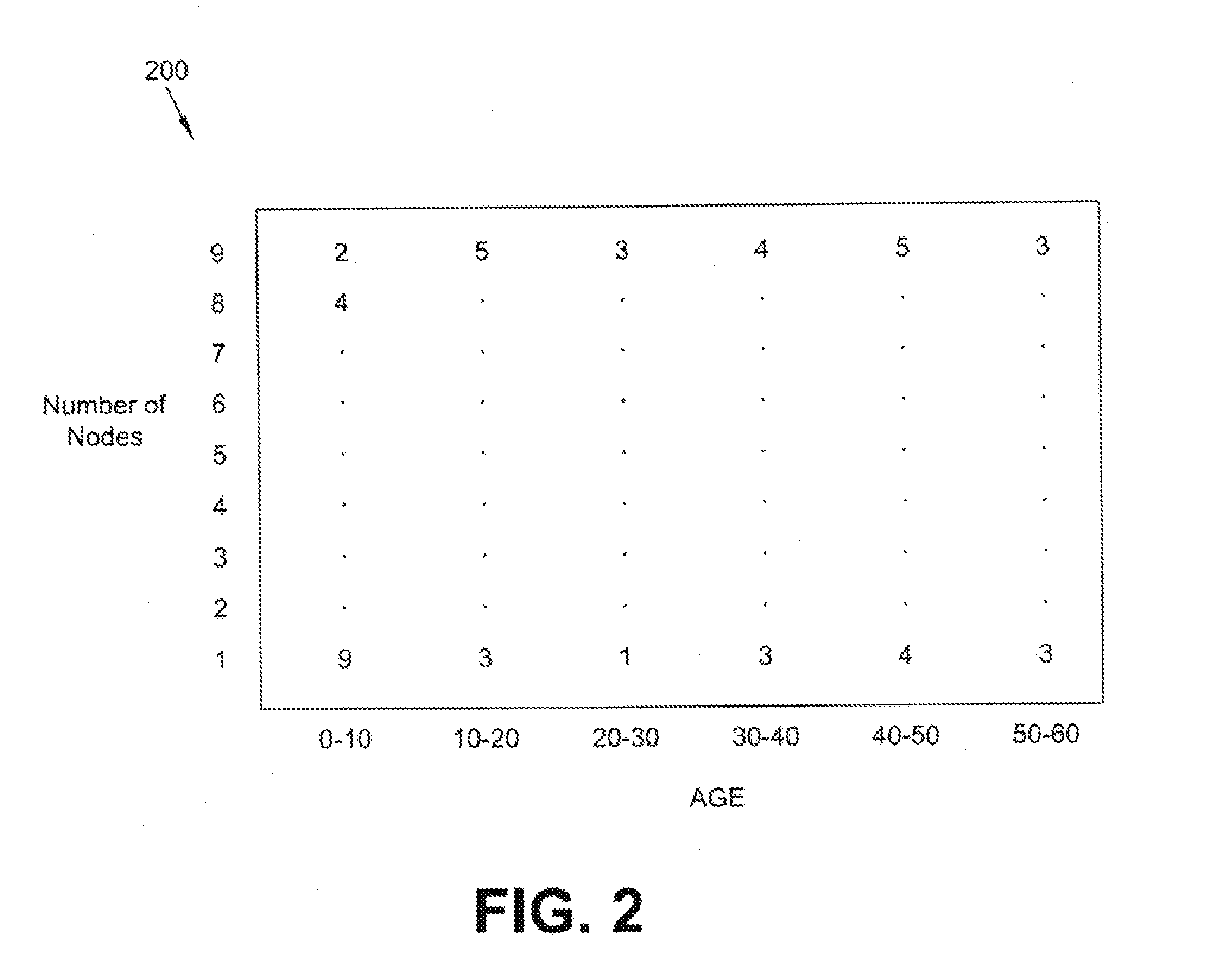Method and system utilizing online analytical processing (OLAP) for making predictions about business locations
- Summary
- Abstract
- Description
- Claims
- Application Information
AI Technical Summary
Benefits of technology
Problems solved by technology
Method used
Image
Examples
Embodiment Construction
[0042]On Line Analytical Processing (OLAP) is an approach for providing answers to analytical queries that are multidimensional in nature. The OLAP is part of the broader category business intelligence, which also includes Extract Transform Load (ETL), relational reporting and data mining. The OLAP is used by the present invention to enable analysis of traffic patterns, at various times, to facilitate business location selection.
[0043]Databases configured for OLAP employ a multidimensional data model, or a MultiDimensional DataBase (MDDB), allowing for complex analytical and ad-hoc queries with a rapid execution time. An alternative and more descriptive term to describe the concept of OLAP may be Fast Analysis of Shared Multidimensional Information (FASMI). These borrow aspects of navigational databases and hierarchical databases that are speedier than their relational kin.
[0044]The output of an OLAP query may be displayed in a matrix format. The dimensions form the row and column o...
PUM
 Login to View More
Login to View More Abstract
Description
Claims
Application Information
 Login to View More
Login to View More - R&D
- Intellectual Property
- Life Sciences
- Materials
- Tech Scout
- Unparalleled Data Quality
- Higher Quality Content
- 60% Fewer Hallucinations
Browse by: Latest US Patents, China's latest patents, Technical Efficacy Thesaurus, Application Domain, Technology Topic, Popular Technical Reports.
© 2025 PatSnap. All rights reserved.Legal|Privacy policy|Modern Slavery Act Transparency Statement|Sitemap|About US| Contact US: help@patsnap.com



